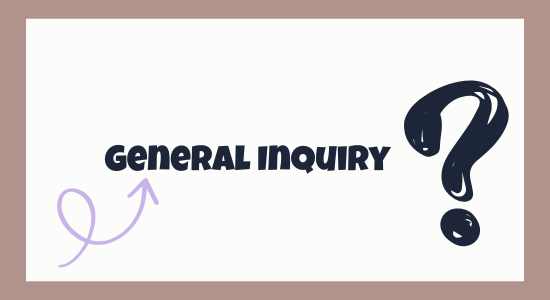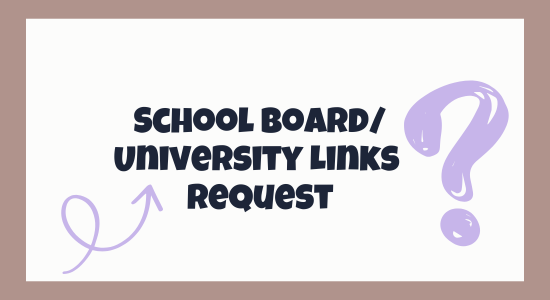
How Project-Based Learning Prepares You for Real Life (Not Just Exams)
Problem: Traditional Education Focuses on Memorization, Not Real-World Skills
Walk into any classroom today, and you’ll likely see the same pattern: textbooks, lectures, notes, and exams. Most schools — from elementary grades to college — follow a similar system. Teachers present information, students memorize it, and they reproduce it during exams.
The goal? Pass the test.
The reality? Passing tests doesn’t mean you’re ready for life after school.
This isn’t a new complaint. A 2019 survey by the World Economic Forum highlighted a growing gap between what students learn in school and the skills employers actually need. Employers consistently report that fresh graduates struggle with problem-solving, collaboration, adaptability, and creative thinking — the very skills critical to success in the modern workforce.
Despite years of standardized tests and essay writing, students leave school unprepared to handle complex, unscripted real-world problems. They can recite historical dates or the periodic table, but ask them to plan a project, work through group conflict, or pitch an idea to a skeptical audience — they flounder.
This is the gap project-based learning (PBL) addresses. It’s not just a trendy teaching method — it’s a proven, structured approach that turns passive learners into active problem-solvers.
Agitate: Real Life Doesn’t Hand Out Multiple-Choice Questions
Imagine starting your first real job. Your boss doesn’t ask you to memorize the company’s history or recite policies. Instead, you’re asked to:
- Collaborate with a team that has different opinions.
- Research solutions to an unfamiliar problem.
- Present your ideas to management.
- Handle constructive criticism and revise your approach.
This is how real life works. You aren’t given clear right or wrong answers. Most problems are open-ended. Solutions involve trial and error. Success comes from a combination of knowledge, creativity, and communication — not from cramming facts into your head the night before.
And yet, traditional classrooms don’t train students for these situations.
This is where project-based learning (PBL) steps in, providing hands-on opportunities for students to tackle real problems without simple answers. But this isn’t just educational theory. There’s data to back it up.
Case Study: High Tech High (San Diego, USA)
High Tech High (HTH) in San Diego built its entire curriculum around project-based learning. Students at HTH don’t just study history or science — they create documentaries, design sustainable buildings, and launch community initiatives. In a 2022 longitudinal study conducted by the Center for Research on Educational Outcomes (CREDO), HTH graduates were:
- 30% more likely to feel confident tackling unfamiliar challenges at work than peers from traditional schools.
- 41% more likely to rate their teamwork and communication skills as "excellent."
- 25% more likely to pursue entrepreneurship or creative careers where independent problem-solving is key.
The reason? These students spent years learning by doing. They developed real skills — not just test-taking strategies.
Solution: Project-Based Learning Builds Real-World Readiness
What is Project-Based Learning?
At its core, project-based learning means students work on meaningful, complex projects over an extended period. These projects require research, problem-solving, teamwork, and creativity. Most importantly, the projects mirror real-world tasks.
Instead of answering worksheet questions about pollution, students might design a campaign to reduce waste at their school — pitching their ideas to administrators. Instead of memorizing formulas, they might build and test water filters, learning engineering concepts through trial and error.
Key Benefits Backed by Data
1. Real Problem-Solving Experience
In the professional world, there’s no answer key. Project-based learning trains students to break down big challenges into smaller steps, brainstorm solutions, and evaluate their options.
A 2021 study by the Buck Institute for Education found that schools using project-based learning saw a 21% improvement in students’ problem-solving skills compared to traditional classrooms.
2. Collaboration Skills Employers Want
Group projects in traditional schools often fail because students lack clear roles or training in teamwork. PBL projects explicitly teach:
- How to divide responsibilities.
- How to give and receive feedback.
- How to manage conflict.
This matters because, according to the National Association of Colleges and Employers (NACE), 86% of employers rank teamwork as a top attribute they seek in new hires.
3. Communication Skills Through Presentations
In PBL, students regularly present their work to peers, teachers, and even external experts. This constant practice sharpens public speaking, persuasion, and the ability to explain ideas clearly — all critical in any career.
A multi-school study in Michigan (2020) found that students in project-based learning programs outperformed peers on communication assessments by 29%.
4. Adaptability and Resilience
Projects rarely go as planned. Students learn to handle setbacks, pivot strategies, and adapt to new information — skills crucial in both professional and personal life.
A 2022 report from the Learning Policy Institute found that PBL students were significantly more comfortable with uncertainty and ambiguity than students in traditional programs — a key trait for success in rapidly changing fields.
PBL in Action: Real Stories
Case Study: Constructionist Learning in Singapore
In Singapore’s Ngee Ann Secondary School, students don’t just study physics concepts like force and motion — they design and build working prototypes of energy-efficient vehicles. In the process, they:
- Research aerodynamics.
- Consult with local engineers.
- Build and test multiple prototypes.
- Present their findings at regional competitions.
Follow-up research showed that these students:
- Scored 19% higher on applied science assessments compared to peers in non-PBL classes.
- Reported higher interest in STEM careers.
- Showed greater persistence when facing difficult technical challenges.
This isn’t theoretical learning — it’s practical preparation for engineering careers.
Case Study: Civics Projects in Chicago
At several Chicago high schools, students participated in semester-long civic action projects where they:
- Identified local issues (food deserts, unsafe parks, transportation access).
- Researched causes and potential solutions.
- Collaborated with local government officials.
- Presented recommendations at community forums.
A follow-up study (2019) found these students:
- They were 32% more likely to vote in local elections after graduation.
- Were 47% more likely to participate in community service projects.
- Reported feeling more capable of influencing local government.
This isn’t abstract civics education — it’s training for real civic engagement.
What About Academic Performance?
Critics sometimes worry that project-based learning focuses too much on soft skills at the expense of core academic content. The data says otherwise.
A 2021 meta-analysis published in the Review of Educational Research found that students in PBL programs performed equally well — and often better — on standardized tests than peers in traditional programs. The difference? PBL students knew the content and understood how to apply it in practical contexts.
Preparing for a Lifetime of Learning
The truth is, even if traditional schooling were enough to pass exams, it wouldn’t be enough for life. The world changes too fast. Technology evolves, industries shift, and new challenges emerge every year.
Project-based learning teaches students how to:
- Learn independently.
- Adapt to unfamiliar situations.
- Collaborate across disciplines.
- Communicate ideas effectively.
These are survival skills — whether students become doctors, entrepreneurs, artists, or engineers.
Rethink What Education Should Look Like
If you’re a student, parent, or educator, it’s time to rethink what success in school means. Memorizing facts and acing tests might feel good in the short term, but life doesn’t hand out answer keys. Real success comes from the ability to learn, adapt, and solve problems in unpredictable environments.
That’s exactly what project-based learning offers.
Schools around the world — from High Tech High to Singapore’s prototype classrooms — are proving that students can excel academically and develop the real-world skills they need to thrive.
If you want to prepare for life (not just exams), project-based learning isn’t just an option. It’s a necessity.
What’s Next?
- If you’re a student: Advocate for more project-based learning opportunities at your school.
- If you’re a parent: Ask your child’s teachers how they incorporate real-world projects into the curriculum.
- If you’re an educator: Start small — introduce one project this semester where students solve a real-world problem.
The future belongs to learners who know how to think, adapt, and collaborate. Project-based learning gets you there.
Related Reading
0 Comments
-
Comments will be injected here via JS












Post a Comment